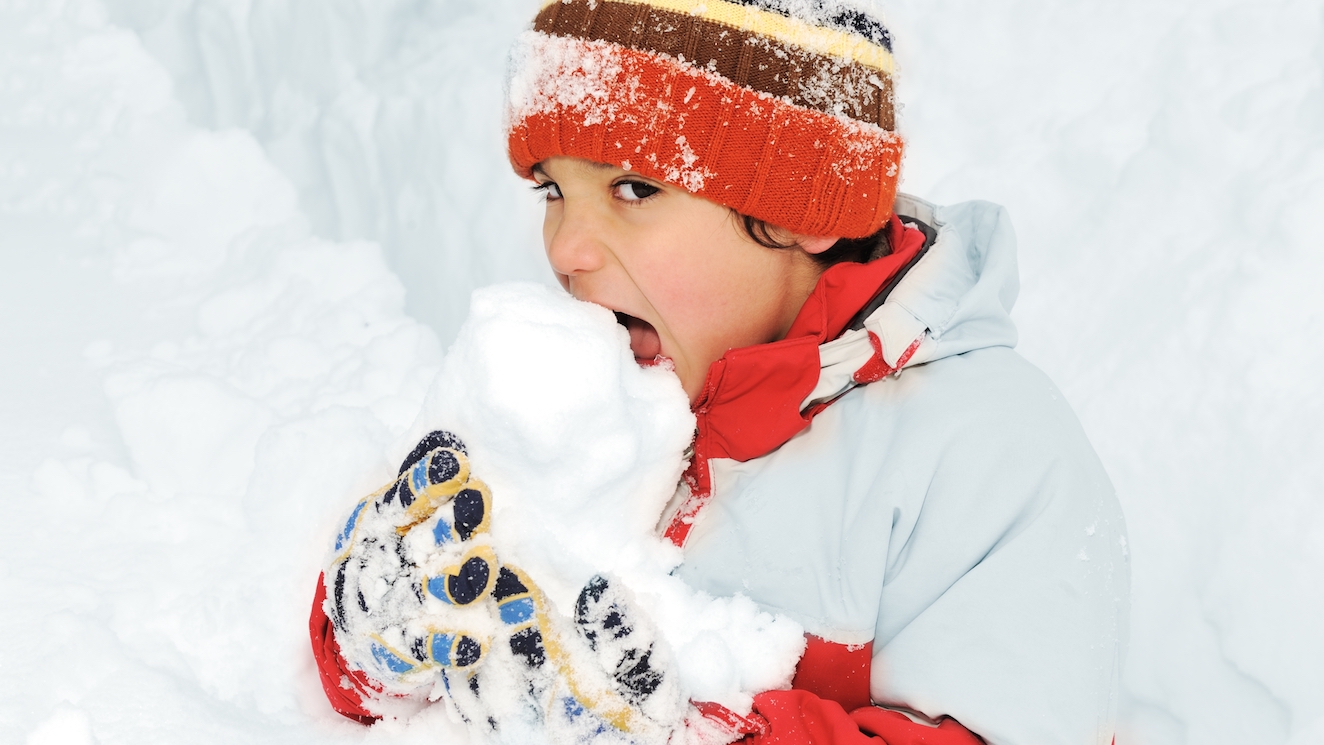

Ah, the holidays. Where sparkle and whimsy turn the mundane into magical! Plain old juice transforms to mulled cider, windows turn into glinting winter wonderlands of lights and snowflakes, the usual mumbled “good morning” for the crossing guard evolves into jolly banter full of cheer and fellowship.
Whether you love or loathe the holiday season (or something in between), there’s a lot going on. If you’re a parent, you’re looking at a disruption of routines, and some new/unusual situations for your kids (hiii, sitting on a costumed stranger’s lap at the mall). Your kids may meet new people or be reintroduced to relatives they’d forgotten about. And because sometimes religion is in the mix, too, there might be questions about the intersection of Jesus, Santa, Hanukkah, presents… and who knows what else.
But, like with anything, if you have a strategy in mind for how to navigate these issues, you’ll be able to survive the holidays with 79.6% more joy and ease. (This is an unscientific number, but it seems about right.) Here are a few practical ways to prepare your kids for the holidays:
1) Set expectations about gifts.
Even if the mall Santa promises your kid the moon and the stars and the rocket ship to get there, it doesn’t mean you have to deliver. Every year, Americans pile so much debt onto their plates from holiday shopping alone. So managing gift expectations will not only help your kids avoid disappointment, but it’s a pressure-relief valve for your budget, too.
Think through what kind of presents you want (and are able) to provide, then get your kid on the same wavelength. For example, I’ve told my daughter that Santa brings pants and boring stuff like that, and the good presents come from me and other real people who actually know her. This helps her understand that gifts come from people who are being thoughtful and deliberate — and she can cultivate a gratitude practice with thank-you notes. It also shows her that we don’t shop beyond what we can afford (saving us from the dreaded “Can’t Santa just get me the mini Ferrari Testarossa Spider?”).
2) Review good manners and tact (and the benefit of the occasional white lie).
As adults, we’re used to treading that faint squiggly line between making other people feel good and telling the truth. As in: “Oh I would absolutely love more of your vegan garbanzo bean quiche, but I had a huge breakfast and I’m stuffed.” But kids aren’t as fluent in this department. So practice! Role-play beforehand and so they can say “Wow! Thank you!” even if they’ve received something cray. Practice together trying a bite of new food and saying “Thank you so much for letting me try this,” even if they just cannot wait to spit it into a napkin. Extra points for being kind to the elderly and to smaller cousins.
3) They decide how they want to show affection (i.e. hugs are their choice).
When I was four, I kneed myself in the face causing an epic bloody nose when my grandfather (whom I loved) tried to hug me and I just didn’t feel like it and tried to kick him away. I didn’t get in trouble, but I also didn’t get heaps of praise for defending my boundaries. Lots of families and certain cultures expect hugs and kisses and lap-sitting. But when we force our kids to do this against their will, or if don’t intervene on their behalf, we’re teaching them that someone’s else’s wishes are more important than their own when it comes to affection and how we use our bodies. It’s a really crazy mixed message in this age where we’re paying so much attention to consent. So if your child is young, step in when s/he recoils as Great Uncle Alfonso With the Coffee Breath goes in for the hug. “Oh, she’s feeling shy. Maybe later,” is a perfectly fine deflection. You can also teach your kid other ways of saying goodbyes and hellos if they’re not comfortable with full-body contact – try fist bumps, secret handshakes and blowing a kiss.
4) Embrace (and celebrate!) religious differences.
Chances are, your holiday celebrations don’t look the same as anyone else’s—even if you’re the same religion and come from roughly the same culture. The holidays are a great time to introduce not only tolerance of others’ beliefs, but also celebration of different cultures and their traditions. Promote cultural curiosity by talking to friends and neighbors about their holidays; go to the library and check out books on Diwali, Kwanzaa, Hanukkah, Christmas and whatever else piques their interest. Help kids understand it’s not wrong or bad if someone doesn’t celebrate the same way – it’s just different.
5) Call on compassion.
Giving money, time and talent is a year-round exercise, but the holidays are especially appropriate for teaching about giving to others and income inequality. Team up with your kids to sponsor a family in need or work together to find a cause dear to your heart. A couple years ago, my daughter, then 5, made it her personal mission to help kids in foster homes. She tied together two candy canes with a shoelace and stuffed her worldly fortune of $19 into an envelope, instructing me to bring it to a nearby agency that serves kids who need families. I don’t know what I’ve ever said or done to get to be a mama to this little person who shines gold from her heart, but whatever it is, we’re on the right track.







